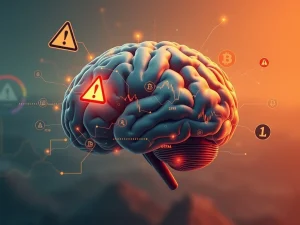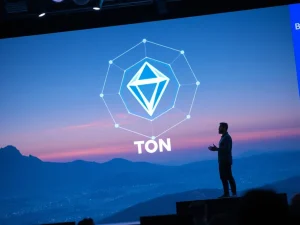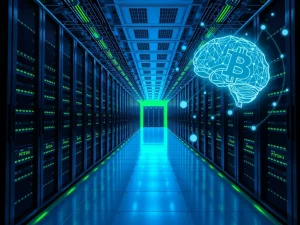Unlock the Power: Gaming Data Fuels the AI Training Revolution

For anyone immersed in the world of cryptocurrencies and decentralized technology, the value of verifiable, high-frequency data is clear. Now, this principle is extending into an unexpected arena: video games. The behavioral data generated by billions of players worldwide is rapidly emerging as a critical resource for advanced AI training, creating a new battleground for innovation and value.
Why is Gaming Data So Valuable for AI Training?
Forget the simple idea of games as just entertainment. Every action within a game – a strategic move, a reaction under pressure, a decision to cooperate or compete – is a data point. This behavioral data is unique because it is:
- **High-Frequency:** Games generate data points every second.
- **Time-Stamped & Geo-Located:** Actions are precisely recorded.
- **Goal-Oriented:** Decisions are tied to explicit objectives within a defined rule set.
- **Reflective of Cognitive Patterns:** Gameplay reveals risk tolerance, resilience, decision-making under stress, and cooperation levels.
No other medium offers such clean, granular insights into human behavior in complex, dynamic environments. Feeding these sequences into reinforcement learning models allows AI agents to learn and adapt in ways previously difficult to achieve.
How is Gaming Data Used in AI Training?
The applications for AI trained on gaming data are diverse and impactful, extending far beyond the gaming world itself. This unique form of AI training is proving invaluable across various sectors:
- **Logistics & Routing:** Agents trained on strategy games can optimize delivery routes or manage complex supply chains with precision.
- **Healthcare:** AI can learn to triage hospital queues or manage resources efficiently based on patterns observed in managing limited resources in games.
- **Traffic Management:** Identifying risky driving patterns or anticipating traffic surges can be modeled using data from simulations or even certain game types.
- **Robotics:** Training robots on gameplay data can teach them complex maneuvers and decision-making in dynamic environments.
- **Finance:** Analyzing reward-sequencing logic from MMO economies can inform trading strategies for hedge funds.
The global player base, exceeding 3.4 billion, generates a constant stream of this valuable behavioral data, creating an unprecedented opportunity for advancing machine learning and real-time AI systems.
Navigating the Landscape: Regulation and Blockchain Data
The collection and use of personal data, especially behavioral data, naturally raise concerns about privacy and surveillance. Regulations are evolving to address these issues, aiming to establish standards rather than outright bans.
The European Union’s AI Act, for example, provides a framework for lawful data collection while prohibiting certain high-risk uses like indiscriminate emotion recognition. This regulatory environment is paving the way for technologies that prioritize privacy and transparency.
This is where blockchain data and Web3 technologies become crucial. Concepts like Zero-Knowledge Proofs (ZKPs) can verify data authenticity and origin without revealing the underlying information. Data packets could be stamped with proof of origin, include audit logs, and incorporate revocable consent flows, becoming standard practice for international data exchange. Just as age ratings helped legitimize gaming decades ago, transparent permissions and auditability can build trust for behavioral data use in the AI era.
From Skins to Royalties: The Web3 Gaming Opportunity
The traditional gaming model often relies on selling cosmetic items or seasonal passes. While effective, these have limited, one-time value. In contrast, structured behavioral data sets gain value over time and through repeated use in AI training.
While the internet is flooded with scraped content, games produce original behavioral data every second. This persistent, unique data stream is a goldmine. Consider these emerging use cases:
- Insurers licensing ‘risk fingerprints’ derived from player behavior in challenging games.
- Edtech platforms modeling student frustration curves based on in-game interactions.
- Hedge funds analyzing economic behaviors pulled from virtual worlds.
Crypto-native investors like Animoca Brands are already highlighting AI and Web3 gaming as key focus areas, signaling market confidence in this convergence.
Onchain marketplaces are beginning to facilitate the trading of synthetic assets representing valuable gameplay data patterns – like stealth routes, guild negotiation strategies, or optimal loot rotations. When a robotics simulator or logistics engine licenses one of these data assets, royalties can flow directly to the tokenholder who owns the rights to that specific data pattern or the collective data set it belongs to. This is a tangible way Web3 provides ownership and monetization opportunities for data contributors.
Building Trust: Transparency in Gaming Data Use
Player trust is paramount. Developers are increasingly aware of this; surveys show a rise in developer concern regarding generative AI, partly due to how player data is used behind the scenes without clear communication.
Players lose confidence when their in-game actions are quietly funneled into external AI models for profit without their knowledge or consent. Trust is rebuilt when players can see exactly what data is being used, how its integrity is verified (perhaps via blockchain data attestations), and who benefits from its use.
Implementing clear, easily accessible opt-out settings is essential. Players should understand the potential trade-offs of opting out, such as longer matchmaking times or less refined game balance. Operational guides, audit logs showing data usage, and reporting channels should be prominent, not hidden away.
An open standard for data transparency in gaming could become a valuable licensing product itself. Any consortium developing such a standard could collect fees from integrations while establishing the baseline for fairness in AI training data practices.
The Market is Moving: The Gaming Data Gold Rush
Studios focused solely on traditional monetization models are missing the bigger picture. Forward-thinking teams are building infrastructure to support this new paradigm:
- Establishing sovereign data vaults for secure storage.
- Issuing verifiable attestations for data origin and integrity via zero-knowledge systems.
- Linking smart contracts to synthetic assets representing data sets or patterns.
This infrastructure enables real-world systems to license gameplay behavior data and compensate players or data asset holders directly. The valuable training fuel is already streaming out of game servers every hour. The legal frameworks are adapting. This isn’t just a trend; it’s a fundamental shift in how we view and monetize digital interaction.
Conclusion
The intersection of gaming, AI, and Web3 is creating profound opportunities. Gaming data, particularly detailed behavioral data, is becoming one of the most valuable resources for AI training across numerous industries. As regulations mature and blockchain technology provides solutions for transparency, consent, and ownership, the potential for players and developers to benefit from this data through models like royalties on synthetic assets is immense. The race to harness this power is on, marking the beginning of a new gold rush where gameplay isn’t just entertainment, but a valuable contribution to the future of AI.
Opinion by: T-RO, co-founder of GamerBoom. This article is for general information purposes and is not intended to be and should not be taken as legal or investment advice. The views, thoughts, and opinions expressed here are the author’s alone and do not necessarily reflect or represent the views and opinions of Crypto News Insights.









